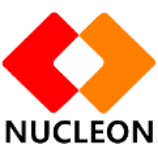EMS Wastewater Management System
Wastewater Management System
The principal objective of wastewater treatment is generally to allow human and industrial effluents to be disposed of without danger to human health or unacceptable damage to the natural environment. Irrigation with wastewater is both disposal and utilization and indeed is an effective form of wastewater disposal (as in slow-rate land treatment). However, some degree of treatment must normally be provided to raw municipal wastewater before it can be used for agricultural or landscape irrigation or for aquaculture. The quality of treated effluent used in agriculture has a great influence on the operation and performance of the wastewater-soil-plant or aquaculture system.
- Preliminary treatment:
The objective of preliminary treatment is the removal of coarse solids and other large materials often found in raw wastewater. Removal of these materials is necessary to enhance the operation and maintenance of subsequent treatment units. - Primary treatment:
The objective of primary treatment is the removal of settleable organic and inorganic solids by sedimentation, and the removal of materials that will float (scum) by skimming. - Secondary treatment:
The objective of secondary treatment is the further treatment of the effluent from primary treatment to remove the residual organics and suspended solids. In most cases, secondary treatment follows primary treatment and involves the removal of biodegradable dissolved and colloidal organic matter using aerobic biological treatment processes. - Tertiary and/or advanced treatment:
Tertiary and/or advanced wastewater treatment is employed when specific wastewater constituents which cannot be removed by secondary treatment must be removed.
One Stop Solution for All Your Epc Requirements
We pride ourselves on our customer-focused approach and provide a one-stop solution for all your EPC requirements.

Our Clients




























